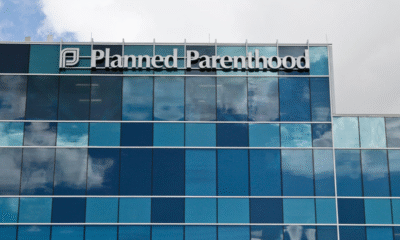INTERNACIONAL
Trump repeatedly walked back tariffs in first 100 days as White House announces latest duty tax relief

President Donald Trump has championed tariffs as the economic tool that will bring parity to the nation’s chronic trade deficit with foreign countries while boosting U.S. jobs and the economy. But many of Trump’s tariff polices have been walked back or paused after going into effect.
«I will immediately begin the overhaul of our trade system to protect American workers and families. Instead of taxing our citizens to enrich other countries, we will tariff and tax foreign countries to enrich our citizens,» Trump declared in his inaugural address Jan. 20, teeing up an onslaught of tariff policies that will take effect in the coming weeks and months.
Tariffs are taxes levied on imported goods and services that historically have contributed to a nation’s federal tax revenue. Developed countries, however, have since moved away from relying on tariffs as a main source of federal funding and have shifted to other forms of taxes — such as income, payroll or sales taxes.
On Tuesday, which marked Trump’s 100th day back in the Oval Office, Trump signed an executive action easing tariffs targeting car manufacturers as he headed to Michigan, historically the heart of the American auto industry, for a rally celebrating his return to the White House.
PRESIDENT DONALD TRUMP’S FIRST 100 DAYS: COMPANIES THAT WILL INVEST $1B OR MORE IN THE US
President Donald Trump has championed tariffs as the economic tool that will bring parity to the nation’s chronic trade deficit with foreign countries while boosting U.S. jobs and the economy. (Brendan Smialowski/AFP via Getty Images)
The upcoming auto plan will keep a 25% tariff on imported cars and a 25% tariff on imported auto parts but will offer offset credits to U.S. manufacturers for a two-year period in an effort to bolster the U.S. supply chain of car parts and encourage manufacturing in the U.S., according to the administration.
The plan will also not stack both auto and steel and aluminum tariffs on the auto industry. Only the higher tariff will be applied to car manufacturers, not a combined tariff.
The announcement is the latest of Trump walking back, pausing or easing tariffs as he looks to even the trade playing field for the U.S., while encouraging U.S. manufacturing and job creation. Industries that manufacture products on U.S. soil do not face any tariffs.
A White House official who spoke to Fox News Digital explained that while the past few months of tariff changes might seem chaotic in their entirety, each change was born out of a need to be flexible and an effort to bring manufacturing and jobs into the U.S. while ending the nation’s chronic trade deficit. The official noted that, as tariffs took effect, many nations and industry leaders have made good-faith efforts to negotiate terms favorable to the U.S., adding to the tariff changes.
AMAZON DENIES TARIFF PRICING PLAN THAT WHITE HOUSE CALLED ‘HOSTILE AND POLITICAL’
Trump’s tariff policies overwhelmingly focused on China, Mexico and Canada at the start of his second administration, as he looked to crack down on illegal immigration. It also was an attempt to stem the flow of the deadly synthetic opioid fentanyl, which overwhelmingly originates in China, from coming across the northern and southern borders.
Citing the threat of illegal aliens in the U.S. and the flow of fentanyl, Trump declared a national emergency in February under the International Emergency Economic Powers Act and imposed a 25% tariff on imports from Canada and Mexico and a 10% additional tariff on imports from China.
The tariffs sparked swift outrage from the three nations, and Trump paused the tariffs on Canada and Mexico for 30 days after the nations agreed to concessions, such as sending additional security personnel to their respective borders with the U.S.

Migrants walk along a road in a caravan in an attempt to reach the U.S. border, in Tapachula, Mexico, in November 2023. (Jose Torres/Reuters)
China, on the other hand, imposed tariffs on some U.S. imports in response to Trump’s tariffs. China’s Finance Ministry said Feb. 4, shortly after the tariffs started, that it would impose a tariff of 15% for coal and liquefied natural gas and 10% for crude oil, agricultural equipment and large-engine cars imported from the U.S.
GROCERY GIANT WARNS ITS SUPPLIERS THAT SUPERMARKET WON’T BE ACCEPTING TARIFF-RELATED PRICE HIKES
The administration official who spoke to Fox Digital pointed to the tariff changes for Mexico and Canada as part of negotiations to secure the border after Trump declared a national emergency under the International Emergency Economic Powers Act.
The tariffs on Mexico and Canada went into effect March 4 after the pause, while the tariffs on China were increased to 20%. A day later, after speaking with auto industry officials from Ford, General Motors and Stellantis, Trump walked back the tariffs if they affected the auto industry, granting a one-month exemption to tariffs «on any autos» from the two countries that abide by the 2020 U.S.-Mexico-Canada Agreement’s rules of origin.
Those rules were established under the first Trump administration, White House press secretary Karoline Leavitt said at a news conference at the time.
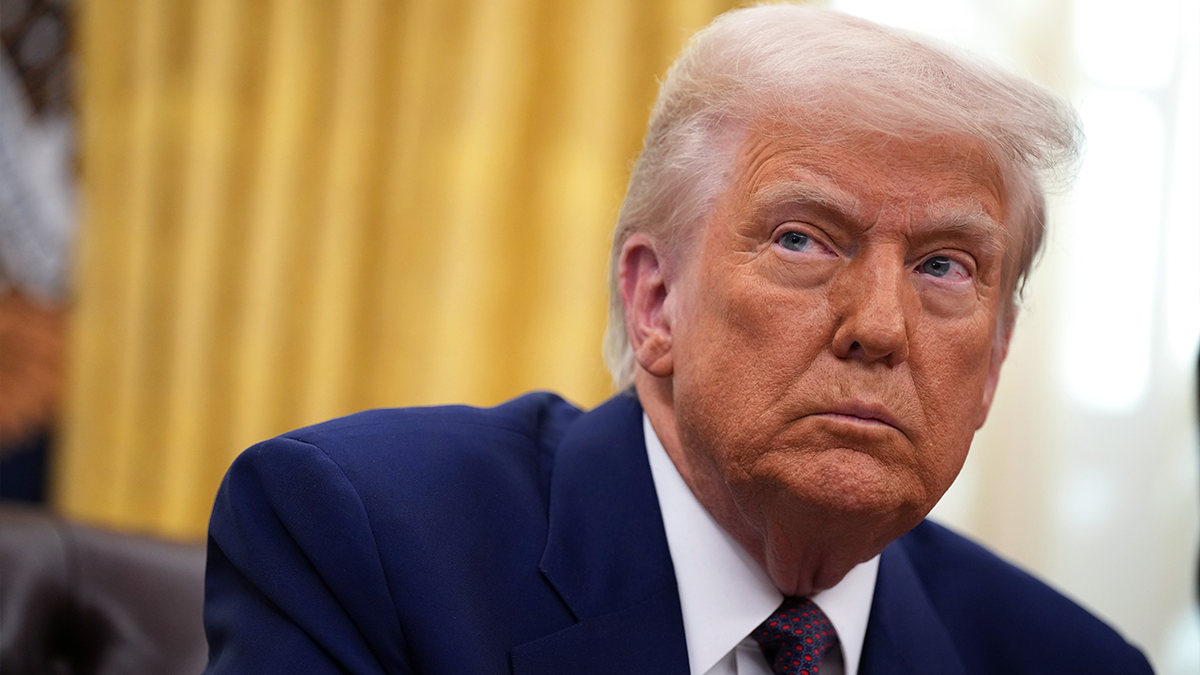
President Donald Trump (Andrew Harnik/Getty Images)
On March 6, Trump again walked back the 25% tariffs on many imports from Canada and Mexico while praising Mexican President Claudia Sheinbaum for helping secure the U.S.-Mexico border. He postponed the tariffs for 30 days and touted that his highly anticipated reciprocal tariff plan would take effect in the coming weeks.
DONALD TRUMP SHOULD BE PRAISED FOR SIGNALS HE MIGHT COOL TARIFF FIGHT, WASHINGTON POST EDITORIAL PRAISES
«I did this as an accommodation, and out of respect for, President Sheinbaum,» Trump said on Truth Social of the March 6 tariff pause. «Our relationship has been a very good one, and we are working hard, together, on the Border.»
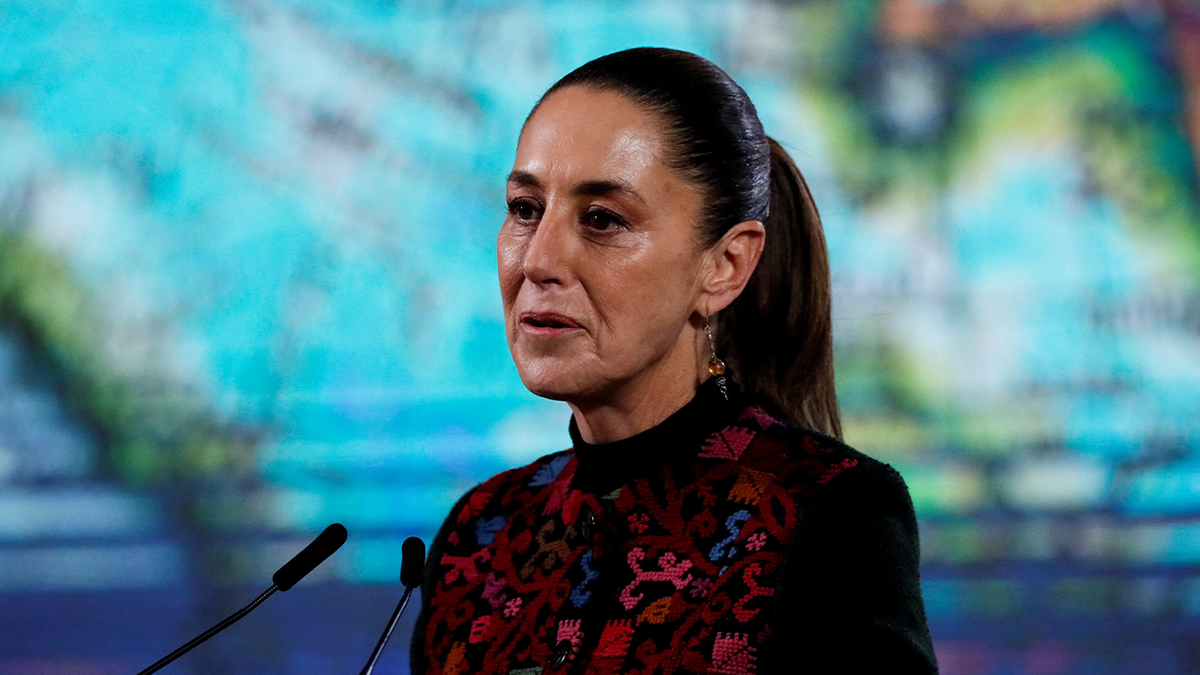
Mexican President Claudia Sheinbaum speaks during a press conference at the National Palace in Mexico City, Mexico, Jan. 8, 2025. (Henry Romero/Reuters)
While announcing and imposing tariffs on nations such as Mexico and Canada, Trump previewed a reciprocal tariff plan that would take effect April 2.
«On trade I have decided for purposes of fairness, that I will charge a reciprocal tariff — meaning whatever countries charge the United States of America, we will charge them no more, no less,» Trump said at the White House in February. «In other words, they charge us a tax or tariff, and we charge them the exact same tax or tariff. Very simple.»
Trump announced his highly anticipated reciprocal tariff plan as part of his «Liberation Day» announcement April 2. Trump announced customized tariffs on dozens of nations to help bring parity to what he said were decades of foreign nations installing trade barriers on U.S. goods, while also imposing a 10% baseline tariff on all countries.
«For nations that treat us badly, we will calculate the combined rate of all their tariffs, nonmonetary barriers and other forms of cheating,» he said. «And because we are being very kind, we will charge them approximately half of what they are and have been charging us. So, the tariffs will be not a full reciprocal. I could have done that. Yes. But it would have been tough for a lot of countries.»
TRUMP SAYS INCOME TAX CUTS, AND PERHAPS ELIMINATION, COMING DUE TO TARIFFS
The EU for example, was hit with a 20% tariff in the reciprocal tariff plan, compared to its 39% tariffs on the U.S., while Japan saw 24% tariffs compared to the 46% the country charges the U.S. China was hit with an additional 34% tariff, compared to the 67% it charges the U.S.
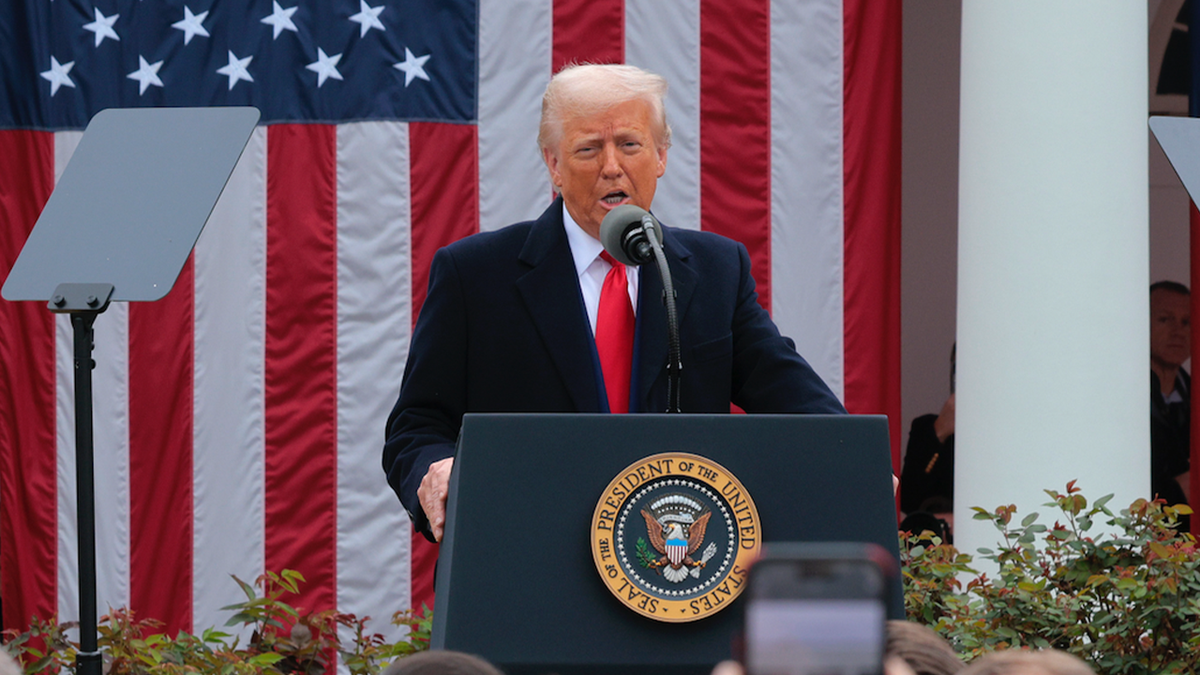
President Donald Trump speaks during a «Make America Wealthy Again» trade announcement event in the Rose Garden at the White House April 2, 2025, in Washington, D.C. (Andrew Harnik/Getty Images)
The same day the reciprocal tariffs were about to take effect April 9, Trump announced a 90-day pause on the customized duty taxes he had imposed on dozens of nations, which was an abrupt change of course from his previous comments that there would be no pause to those tariffs, only negotiations. The pause did not include the 10% baseline tariff on all nations.
«You have to have flexibility,» Trump told the media when asked about his credibility after pausing the tariffs. «I could say there’s a wall. … Sometimes, you have to go around or under the wall. Financial markets change. Look how much they changed. I think the word would be ‘flexible.’ You have to be flexible.»
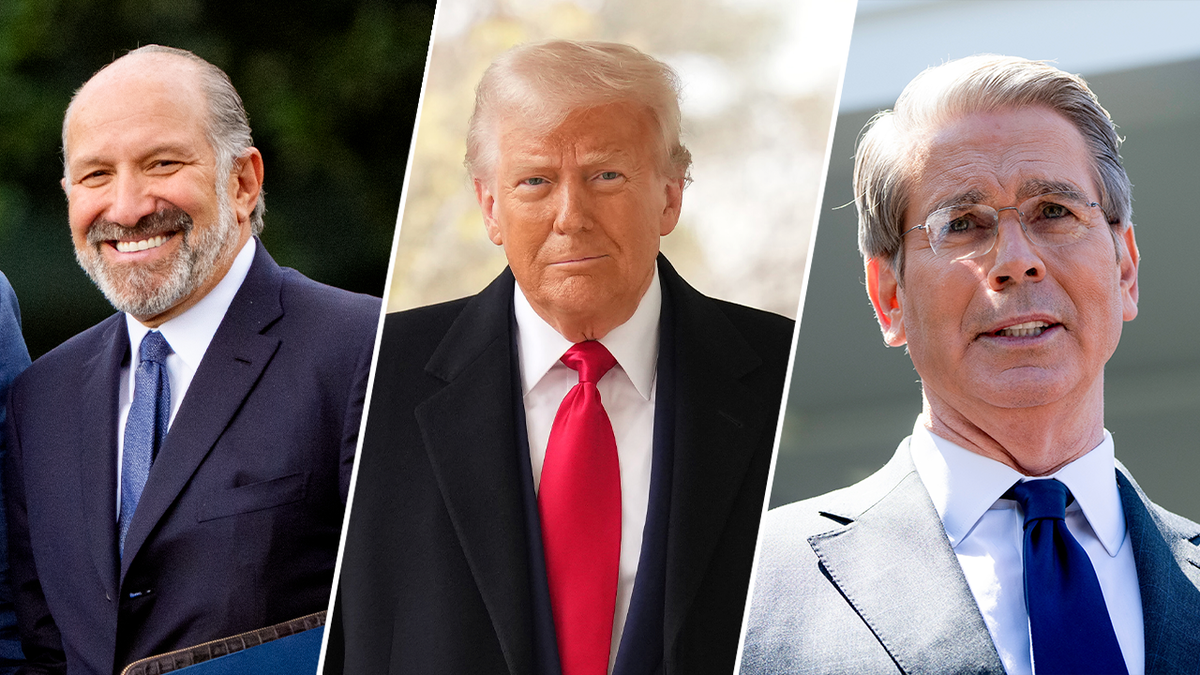
Commerce Secretary Howard Lutnick, President Donald Trump and Secretary of the Treasury Scott Bessent (Getty Images)
White House officials told Fox News Digital at the time that dozens of countries had reached out to the White House looking to make good-faith deals, and that the administration was zeroing in on renegotiating more favorable deals for the U.S.
Treasury Secretary Scott Bessent indicated in recent days that trade negotiations with at least South Korea and India are entering the final stages.
Other tariffs, such as a 25% tax on all steel and aluminum imports or the 10% baseline tariff on foreign nations, have remained in effect without change.
Trump has touted that with increased revenue from tariffs, U.S. citizens could see lower taxes and the possible elimination of the income tax.
CLICK HERE TO GET THE FOX NEWS APP
«When Tariffs cut in, many people’s Income Taxes will be substantially reduced, maybe even completely eliminated. Focus will be on people making less than $200,000 a year,» Trump wrote in a post on Truth Social April 13.
«Also, massive numbers of jobs are already being created, with new plants and factories currently being built or planned. It will be a BONANZA FOR AMERICA!!! THE EXTERNAL REVENUE SERVICE IS HAPPENING!!!»
Fox News Digital’s Eric Revell contributed to this report.
Donald Trump,Trump’s First 100 Days,Trade,Economy,White House,China,Canada
INTERNACIONAL
El jefe del Ejército de Israel habló sobre una posible ofensiva total contra Hamas: “Estamos lidiando con asuntos de vida o muerte”

El jefe del Estado Mayor del Ejército israelí, Eyal Zamir, aseguró este jueves que la bautizada como operación Carros de Gedeón, la fase de la ofensiva israelí en Gaza que comenzó a mediados de mayo con el objetivo de ampliar el control militar del enclave palestino, está llegando a su fin tras lograr sus objetivos.
Las declaraciones de Zamir llegan en medio de una creciente tensión entre la cúpula militar y el primer ministro Benjamin Netanyahu por los planes del mandatario para tomar el control total de la Franja de Gaza, una propuesta que el Ejército rechaza categóricamente.
“Hemos cumplido e incluso superado los objetivos de la operación, y continuamos actuando para garantizar la seguridad a largo plazo de las comunidades del sur”, declaró Zamir durante una evaluación de seguridad matutina con la alta dirigencia militar, según comunicó el Ejército israelí.
El alto oficial militar añadió que las fuerzas armadas tienen “la capacidad de crear una nueva realidad de seguridad junto a la frontera, mientras mantenemos la presión sobre el enemigo. No volveremos a limitar nuestras respuestas. Eliminaremos las amenazas en su fase inicial”.

En un mensaje que parece dirigido directamente al gobierno, Zamir también defendió el derecho del Ejército a expresar su opinión profesional, incluso cuando esta difiera de las posiciones políticas. “Una cultura de desacuerdo es una parte inseparable de la historia del pueblo de Israel; es un componente vital de la cultura organizacional de las FDI, tanto interna como externamente”, declaró.
“Seguiremos expresando nuestras posiciones sin miedo, de manera sustancial, independiente y profesional”, agregó el jefe militar, en comentarios que fueron publicados horas antes de una reunión del gabinete de seguridad prevista para esta tarde, donde se discutirán los planes de ocupación de Gaza.
Fuentes en la Oficina del Primer Ministro han sugerido que si Zamir se opone al plan de ocupar Gaza, puede renunciar, según múltiples reportes que indican repetidos choques entre el jefe militar y el gabinete en días recientes.
Las fuerzas armadas israelíes son reacias a operar en lugares donde se encuentran retenidos los rehenes por temor a que los grupo terroristas palestinos en Gaza los ejecuten ante el avance de las tropas, como ya ocurrió a finales de agosto de 2024 con seis cautivos, cuyos cadáveres fueron hallados el 1 de septiembre.
Según la cadena pública israelí Kan, la cúpula militar cree además que ocupar toda Gaza provocará un aumento considerable de las bajas israelíes.
“No estamos lidiando con teoría; estamos lidiando con asuntos de vida o muerte, con la defensa del estado, y lo hacemos mientras miramos directamente a los ojos de nuestros soldados y los ciudadanos del país”, enfatizó Zamir durante la evaluación matutina. “Continuaremos actuando con responsabilidad, integridad y determinación, con solo el bien del estado y su seguridad ante nuestros ojos”.

La resistencia a los planes de Netanyahu no se limita al ámbito militar. El líder de la oposición israelí, Yair Lapid, advirtió este miércoles al primer ministro que la ocupación total de la Franja de Gaza “es una pésima idea”.
Tras reunirse con Netanyahu en Jerusalén, Lapid afirmó que le dijo: “Ocupar Gaza es una pésima idea. La mayoría de la gente no te apoya; al pueblo de Israel no le interesa esta guerra. Pagaremos un alto precio por ello”.
Lapid propuso una alternativa: “En lugar de una ocupación y una anexión de Gaza innecesarias, necesitamos atraer a Egipto a Gaza, para que haya otro gobierno que la gestione en vez de nosotros, y después centrarnos en lo importante, que es eliminar a Hamas”.
A pesar de la oposición militar y política, Netanyahu tiene previsto reunir este jueves por la tarde a su gabinete de seguridad para aprobar sus planes para tomar el control de toda la Franja.
El martes, tras una reunión de tres horas entre Netanyahu y Zamir, la oficina del primer ministro declaró que “las FDI están preparadas para implementar cualquier decisión tomada por el gabinete político y de seguridad”.
Zamir reafirmó el compromiso del Ejército con sus objetivos fundamentales: “Tenemos la intención de derrotar y colapsar a Hamas. Continuaremos actuando con nuestros rehenes en mente, y haremos todo para traerlos a casa”.
Middle East,Civil Unrest,TEL AVIV
INTERNACIONAL
4 key Senate seats Republicans aim to flip in 2026 midterms to expand their majority
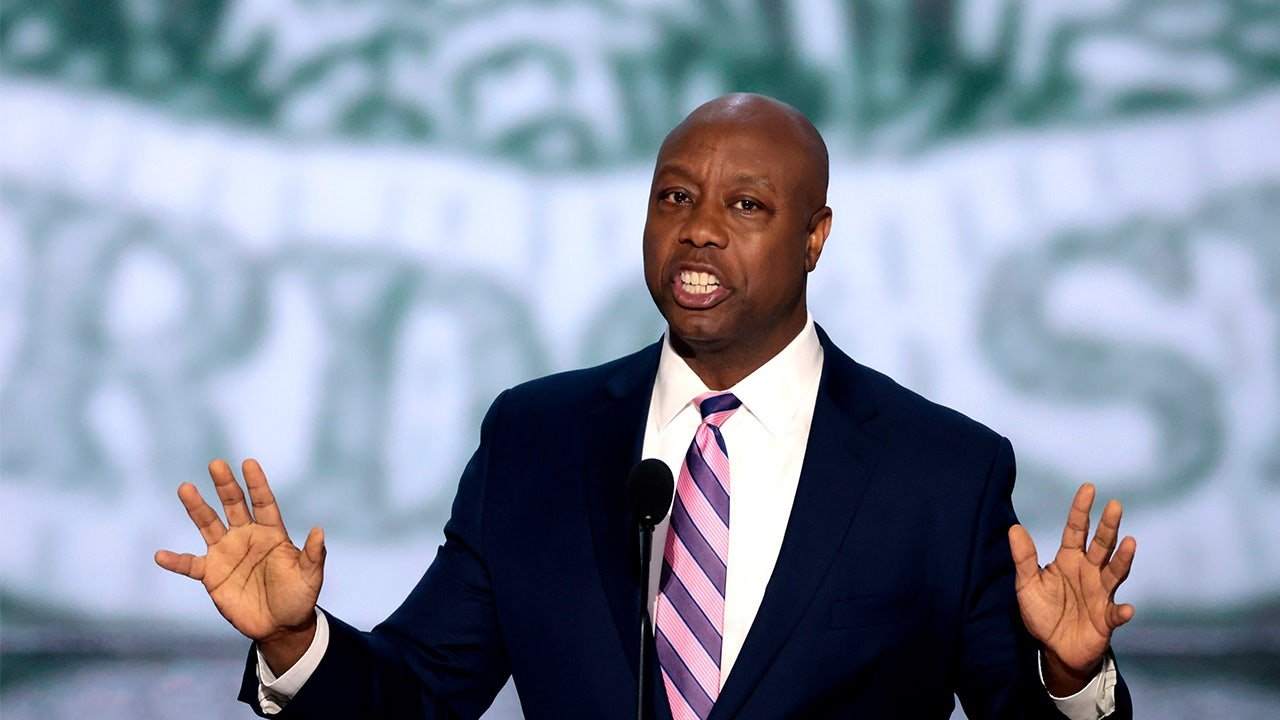
NEWYou can now listen to Fox News articles!
Republican Sen. Tim Scott’s goal in next year’s midterm elections is not only to defend the GOP’s 53-47 margin in the Senate, but to expand the majority.
Scott, the conservative senator from South Carolina, told Fox News Digital soon after taking over late last year as chair of the National Republican Senatorial Committee (NRSC) that he aimed to increase the GOP’s control in the chamber to at least 55 seats.
And he’s standing by his goal.
«The bottom line is, I believe that we can defend our current seats while adding at least two more seats to our numbers,» the NRSC chair told Fox News Digital earlier this year.
THIS REPUBLICAN JUST JUMPED INTO BATTLEGROUND GEORGIA’S HIGH-PROFILE SENATE RACE
Sen. Tim Scott spoke to a South Carolina GOP delegation breakfast on Wednesday (pictured speaking on the RNC stage). (Getty Images)
Senate Republicans enjoyed a favorable map in the 2024 cycle as they flipped four seats from blue to red to win back the majority.
But the party in power—clearly the Republicans right now—traditionally faces political headwinds in the midterm elections. Nevertheless, a current read of the 2026 map indicates the GOP may be able to go on offense in some key states.
In battleground Georgia, which President Donald Trump narrowly carried in last year’s White House race, Republicans view first-term Sen. Jon Ossoff as the most vulnerable Democrat incumbent up for re-election next year.
TRUMP-BACKED RNC CHAIR JUMPS INTO THE NATION’S ‘MARQUEE’ SENATE RACE
They’re also targeting battleground Michigan, where Democratic Sen. Gary Peters is retiring at the end of next year, and swing state New Hampshire, where longtime Democratic Sen. Jeanne Shaheen decided against seeking a fourth six-year term in the Senate.
Also on the NRSC’s target list is blue-leaning Minnesota, where Democratic Sen. Tina Smith isn’t running for re-election.
At the top of their list is Ossoff, who narrowly won election to the Senate in a January 2021 runoff contest.
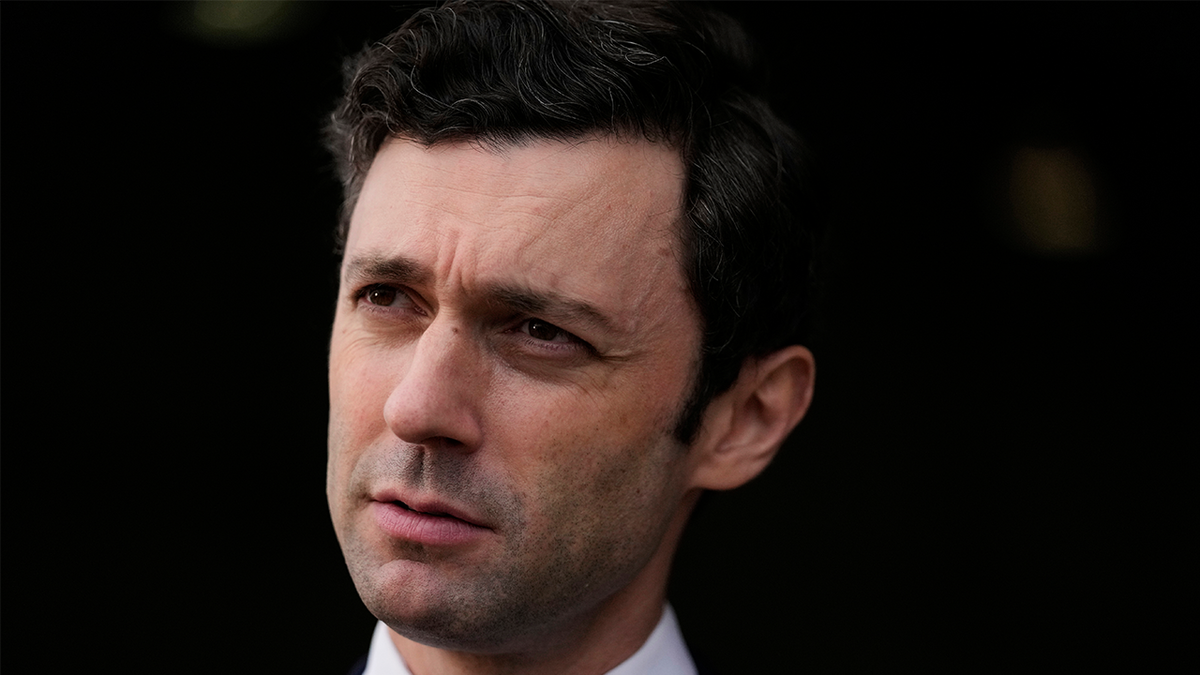
Republicans view Sen. Jon Ossoff as the most vulnerable Democrat running for re-election in the 2026 midterm elections. (AP)
But Ossoff is off to a very hot fundraising start, and a GOP primary in Georgia between Reps. Mike Collins and Buddy Carter, and former college and professional football coach Derek Dooley, is starting to turn combustible.
DNC CHAIR TELLS FOX NEWS DIGITAL DEMOCRATS HAVE HIT ‘ROCK BOTTOM’ – HERE’S HIS PLAN TO REBOUND
Republicans are also confident they can flip Michigan, another battleground Trump narrowly carried last November.
Former Rep. Mike Rogers, the 2024 GOP Senate nominee who lost last year’s race by a razor-thin margin, has at this point cleared the Republican primary field, thanks in great part to Trump’s endorsement.
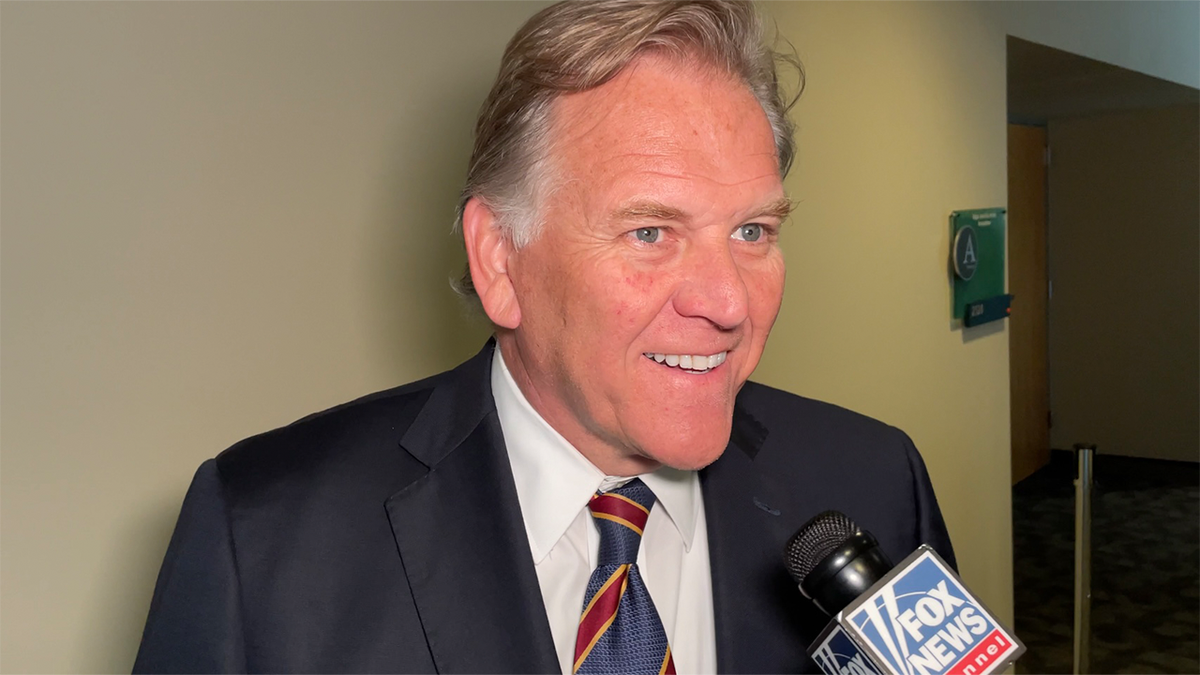
Former Rep. Mike Rogers, a Republican Senate candidate in Michigan for a second straight election cycle, is interviewed by Fox New Digital in Grand Rapids, Michigan on April 2, 2024. (Paul Steinhauser – Fox News )
Democrats, meanwhile, have a very competitive primary on their hands. The primary race includes three well-known Democrats: Rep. Haley Stevens, state Sen. Mallory McMorrow and former gubernatorial candidate Abdul El-Sayed, who enjoys the backing of progressive champion Sen. Bernie Sanders of Vermont.
With Shaheen, who made history as the first woman in the nation’s history to win election as a governor and a senator, out of the running in New Hampshire, the GOP is hoping to win a Senate election in the Granite State for the first time in 16 years.

Democratic Sen. Jeanne Shaheen of New Hampshire, seen at a policy event in Concord, N.H. on Oct. 22, 2024, isn’t seeking a fourth term in the Senate when she’s up for re-election in 2026. (AP Photo/Steven Senne)
They’re encouraged by the gains Trump made in New Hampshire in last year’s election, as he improved on his showing from four years earlier and came close to carrying the state.
But four-term Rep. Chris Pappas’ announcement in early April that he would run to succeed Shaheen has cleared the Democratic primary field, as of now, of any potential rivals for the party’s Senate nomination.
Meanwhile, a Republican primary in the state—where the GOP hasn’t won a Senate race in 15 years—is heating up between former Sen. Scott Brown and state Sen. Dan Innis, with the possibility of more candidates entering the race.
In Minnesota, the leading candidates in the Democratic primary to succeed Smith are Lt. Gov. Peggy Flanagan and Rep. Angie Craig.
Former professional basketball player Royce White, who won the 2024 Senate nomination in Minnesota, and former Navy SEAL Adam Schwarze are currently running in the GOP primary. But another Republican Senate hopeful may soon enter the field.
While Republicans will work to defy political history in next year’s midterms, they point to the Democratic Party’s current brand issues.
CLICK HERE TO GET THE FOX NEWS APP
«Democrats have historically low approval ratings because candidates like Jon Ossoff and Chris Pappas keep prioritizing radical policies like men in women’s sports, protecting sanctuary cities for criminal illegal aliens, and raising taxes on working families,» NRSC communications director Joanna Rodriguez argued in a statement to Fox News.
And Rodriguez touted that «Republicans are delivering on policies that keep Americans safe and let families and workers keep more of their hard-earned paychecks. Voters will reward us for it in 2026.»
midterm elections,elections,senate elections,republicans elections,georgia,michigan,new hampshire,minnesota
INTERNACIONAL
Netanyahu’s security cabinet to meet on Gaza war, as some in Israel call to resettle enclave

NEWYou can now listen to Fox News articles!
Israeli Prime Minister Benjamin Netanyahu is set to convene his high-level security cabinet on Thursday to discuss expanding the war against Hamas, including the potential full military occupation of the Gaza Strip.
The prospect comes against the backdrop of the 20th anniversary of Israel’s full disengagement from the enclave, as calls for resettlement — once confined to the political fringes — have entered the mainstream, including within the government, particularly in the wake of Hamas’s Oct. 7 massacre.
Rebuilding Jewish communities in Gaza would be «a historic correction to a national injustice,» Yitzhak Wasserlauf, Israel’s minister for the Development of the Periphery, the Negev and the Galilee, told Fox News Digital.
FOX NEWS GETS INSIDE LOOK AT GAZA HUMANITARIAN SITUATION AS ISRAEL WEIGHS NEXT STEPS
Israeli Prime Minister Benjamin Netanyahu stands on a platform overlooking the Gaza Strip during his first visit to Kibbutz Nir Oz since the Oct. 7, 2023 attack by Hamas terrorists where a significant number of this community were killed or captured, near the Israel-Gaza border in southern Israel, on Thursday, July 3, 2025. (AP Photo/Leo Correa)
«Expelling Jews from their homes in their own country was a strategic and moral mistake that led to the rise of an Islamist terrorist regime called Hamas,» he said. «That mistake enabled Hamas to fire relentless rockets and ultimately carry out the October 7 massacre — which included murder, rape, abuse, looting, and, of course, the kidnapping of soldiers and civilians.»
Wasserlauf invoked the bloc of 17 Israeli communities, collectively known as Gush Katif, which was established in Gaza after the 1967 Six-Day War. In August 2005, as part of Israel’s unilateral disengagement, the government forcibly removed approximately 8,600 Jewish residents from the area.
He said reapplying Israeli sovereignty «would send a clear message: whoever strikes us loses the ground beneath his feet. Only in this way can true deterrence be achieved,» Wasserlauf continued. «We need to create facts on the ground. There must be no agreements with terrorists. Settlement in Gaza must, at the very least, be the price that reminds everyone terrorism does not pay.»
From 1948 to 1967, the Gaza Strip was under Egyptian occupation. After Israel captured the territory in the 1967 Six-Day War, it remained under full Israeli control until 1994, when administrative responsibility was transferred to the Palestinian Authority under the Oslo Accords — paving the way for Yasser Arafat’s return from exile in Tunis.

Hamas terrorists emerge from the shadows as they surround Red Cross vehicles. (TPS-IL)
In 2005, Israel evacuated all military personnel and civilian communities from Gaza. Shortly thereafter, Hamas won the Palestinian legislative elections and staged a violent coup to overthrow the Palestinian Authority and seize control of the Strip.
A year after Israel unilaterally disengaged from Gaza, evacuating all military personnel and civilian communities, Hamas won the Palestinian legislative elections and, shortly thereafter, staged a violent coup to overthrow the Palestinian Authority and seize control of the Strip.
Wasserlauf argued that critics of the disengagement had long warned that any concession of land would only embolden terrorists. These warnings, he said, were ignored, but ultimately proven correct by the events that followed.
He acknowledged that renewed settlement in Gaza would likely trigger political backlash both domestically and abroad. «The countries that support us will stand with us, and those that consistently oppose us will remain against us … I remind you that there were countries that urged us not to strike Iran, despite its race toward nuclear weapons and its explicit goal of destroying Israel.»
BROTHER OF ISRAELI HOSTAGE URGES UN TO ACT AFTER VIDEO SHOWS HAMAS STARVING AND TORTURING CAPTIVES
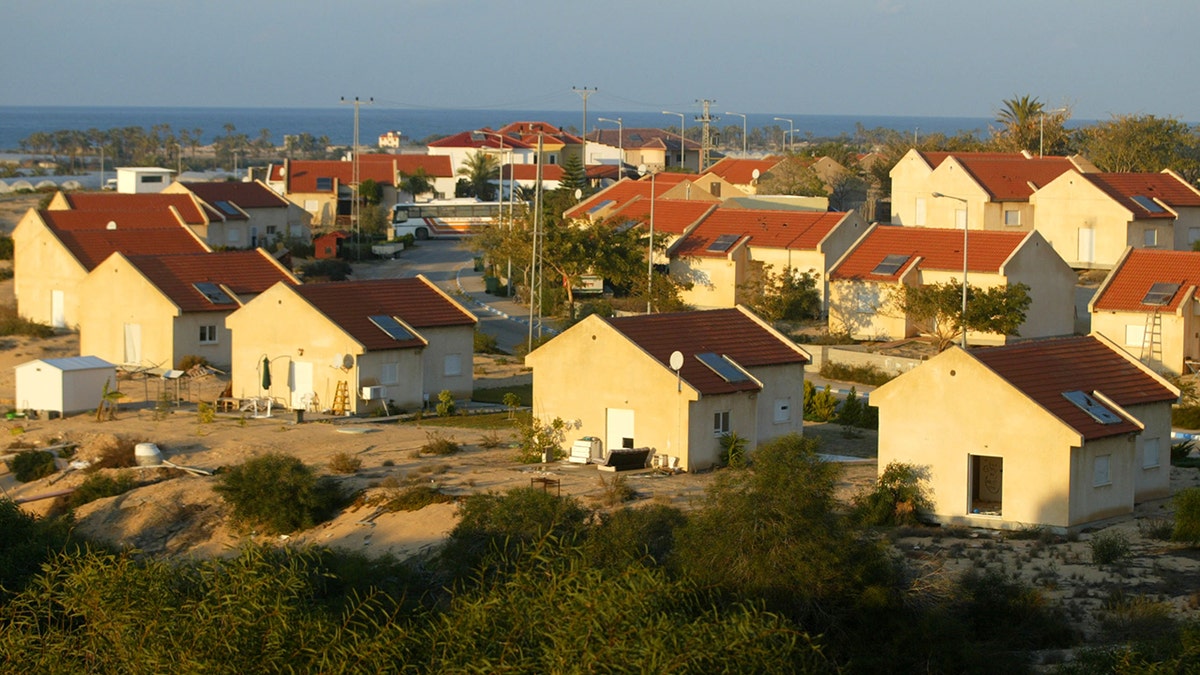
The Israeli settlement of Pa’at Sadeh is seen Dec. 26, 2004 in the southern Gaza Strip.
Brig. Gen. (Res.) Amir Avivi told Fox News Digital that Israel’s core national security doctrine of deterrence is being tested by jihadist groups like Hamas, which operate according to a radically different set of rules.
Avivi, founder and chairman of the Israel Defense and Security Forum, said that Israel’s approach to Gaza may ultimately hinge on U.S. support, especially from President Donald Trump. «If the U.S. president advocates for massive relocation and taking control of Gaza to implement his own vision, it would suggest some kind of basic understanding between the two sides,» Avivi said.
He estimated that the Israel Defense Forces (IDF) currently controls about 75% of Gaza, with past decisions largely driven by military considerations. However, he said that the remaining 25% of the territory involves broader strategic decisions, shaped by how Israel and the United States view the future of the area, including Jewish settlement.
Maj. Gen. (Res.) Yaakov Amidror, a former national security adviser, told Fox News Digital that resettling Gaza should not be part of Israel’s agenda.

Chief of the General Staff LTG Eyal Zamir conducted a field tour in the Rafah area of the Gaza Strip. Zamir spoke with soldiers and was presented with defensive preparations and operational plans. (IDF)
«We have one mission now, and that is to dismantle Hamas,» he said. «We’ll talk about the day after, the day after. To bring back any level of normalcy to Gaza, we need to find partners — and I don’t know who those partners would be if we settle in Gaza.»
SHE FED 100K GAZAN FAMILIES FOR FREE – NOW TERRORISTS AND LOCAL MERCHANTS WANT HER DEAD
Amidror, a distinguished fellow with the Jewish Institute for National Security of America, said that Israel must in the long-term remain solely responsible for security in Gaza, citing past failures when control was transferred to the Palestinians after the Oslo Accords. He argued that reestablishing settlements could complicate that mission, asserting that security should remain solely in the hands of the IDF.
Religious Zionism lawmaker Simcha Rothman told Fox News Digital that «If we are trying to achieve peace, any agreement or situation in which Jews cannot live in their ancient homeland is not just,» but acknowledged it is not one of Israel’s official war objectives. «While resettling Gaza is the right thing to do, it is not part of the current effort.»
Maj. Gen. (ret.) Amos Yadlin, former head of IDF Military Intelligence, reiterated that resettling Gaza is not part of the Israeli government’s declared war objectives.
«If Israel needs to reoccupy Gaza militarily, it should be to destroy Hamas and bring back the hostages — not to annex Gaza as part of Israel. There are 2 million Palestinians in Gaza, maybe more,» Yadlin, who is currently president of MIND Israel, told Fox News Digital.

Memorials at the site of the Oct. 7 Hamas terror attack on the Supernova music festival near Kibbutz Re’im, Israel, on Monday, May 27, 2024. (Kobi Wolf/Bloomberg via Getty Images)
«Israel does not want to rule over them or provide for all their needs. It would cost billions and alter the demographic balance. This idea is being pushed by right-wing elements in the government, and even the prime minister and his party do not support it,» he said.
Daniella Weiss, general director of the Nachala Settlement Movement, told Fox News Digital that the aftermath of Hamas’s October 7 attack signals the start of a new era. «I think we should go much further than what existed in 2005. Back then, we were 10,000 people in Gaza. Our movement, Nachala, has proposed a plan for 1.2 million Jews in Gaza,» Weiss said.
CLICK HERE TO GET THE FOX NEWS APP

Israelis march from Sderot toward the northern border of Gaza, calling for the re-establishment of settlements in the territory, on July 30, 2025 in Israel. (Mostafa Alkharouf/Anadolu via Getty Images)
She said her organization is already taking tangible steps to begin the process, «We’ve organized six groups of young families—more than 1,000 families—who are willing to move to Gaza now,» she said.
While Weiss expressed regret that the Israeli government has not included Jewish resettlement in its official war objectives, she insisted that in Israel’s democracy, public pressure can influence government policy.
«The basic truth is that the Gaza area is part of the western Negev,» she said. «Historically, it was part of the area of the tribe of Yehuda. To turn your back on that is wrong.»
israel,conflicts,middle east,terrorism

 CHIMENTOS2 días ago
CHIMENTOS2 días agoMalas noticias para Wanda Nara: por qué la bajaron misteriosamente de MasterChef: «No va a salir este año»

 DEPORTE2 días ago
DEPORTE2 días agoEl Como de Fàbregas, el nuevo rico de Italia

 POLITICA2 días ago
POLITICA2 días agoSebastián Pareja justificó el armado de listas de LLA en la Provincia: “El desafío era dar una opción diferencial”











